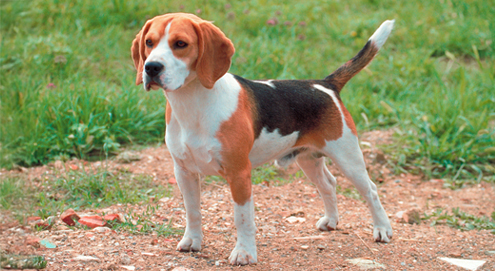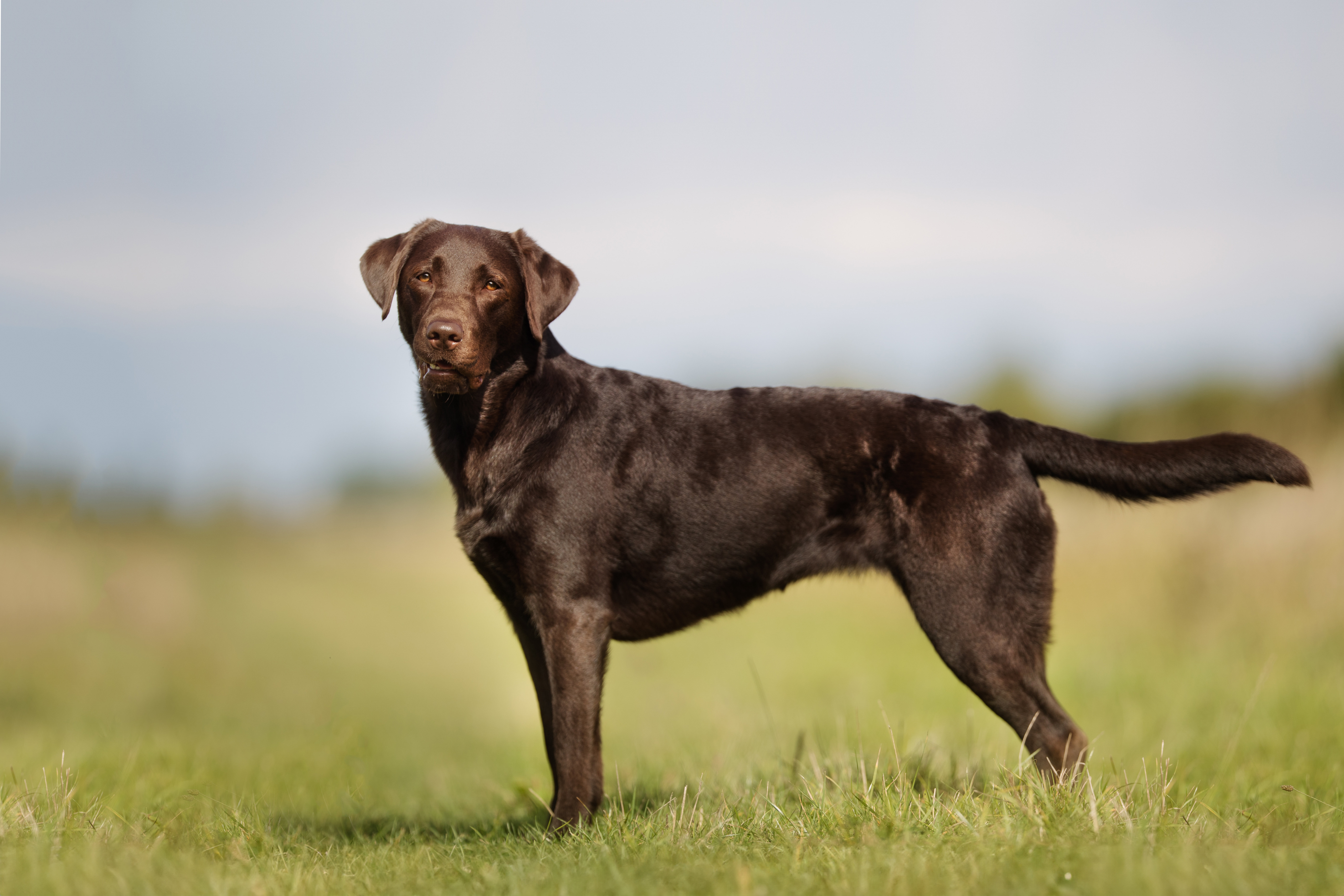
What is the best dog food?
The answer to the above question is subjective and depends on your own preference and that of your dog. We’ve made an overview of the most popular diets in every category, using our extensive range of dog foods.
The Beagle is a cheerful, social, and intelligent dog, highly popular as a family pet. Originally bred as a hunting dog, the Beagle is known for its energetic and friendly nature. With its compact build and distinctive floppy ears, it is easily recognisable. Its short, dense coat comes in various colour combinations, including black, brown, tan, red, grey, and sand. The Beagle is an active dog that requires plenty of exercise and gets along well with both adults and children. Its intelligence makes it trainable, although it can sometimes be stubborn and easily distracted. Consistent and patient training is therefore essential. With proper care and attention, a Beagle can live between 10 and 15 years.

The Beagle’s history dates back to ancient Greece and Rome, but the breed as we know it today was developed in England. During the Middle Ages, Beagles were used by English hunters to track rabbits and hares. Their exceptional sense of smell and determined nature made them ideal for this work. By the 19th century, the breed had gained popularity outside England, thanks to breeders refining their tracking ability and hunting instincts. Over time, the Beagle became both a beloved family pet and a skilled hunting dog.
The Beagle is known for its friendly, curious, and social nature. Naturally playful and energetic, it makes an excellent family dog that gets along well with children and other pets. Beagles are intelligent but strong-willed, which can make them a bit stubborn. With their excellent sense of smell and strong hunting instincts, they tend to follow scents without considering where they are going. This adventurous and easily distracted nature can be challenging during training. However, with patience, consistency, and plenty of exercise, a Beagle can become a well-behaved and happy companion.
The Beagle is a medium-sized, sturdy dog with a compact and muscular build. Its face has a friendly expression, with large, dark eyes and long, floppy ears that give it a gentle and social look. The Beagle has a straight back and a typically upright tail, reflecting its cheerful and energetic personality.
Size: The Beagle is usually 33 to 41 cm tall and weighs between 9 and 11 kg, depending on gender and body type.
Coat: The Beagle has a short, dense coat that is usually tricolour (black, white, and brown), although other colours also occur. Its coat is weather-resistant and relatively easy to maintain.
The Beagle requires plenty of daily exercise to stay happy and healthy. This naturally energetic breed, with a strong hunting instinct, benefits from long walks, playtime, and mental stimulation. Beagles love running and enjoy games such as fetch, scent work, and agility training. Ideally, they should get one to two hours of exercise per day, including activities that allow them to use their nose, which is essential for their well-being.
The Beagle’s short, dense coat is relatively low-maintenance but sheds moderately. Regular brushing helps remove loose hairs and keeps the coat healthy and shiny. Special attention should be given to its ears, as their floppy shape makes them prone to dirt buildup and moisture retention, which can lead to infections. It is important to check and clean the ears weekly. Additionally, regular nail trimming and teeth cleaning help maintain overall health.
Beagles are generally healthy dogs, but they can be prone to certain health conditions. Common issues include hip dysplasia, a condition where the hip joint is improperly formed, leading to pain and mobility problems. They are also susceptible to hypothyroidism, where the thyroid gland functions too slowly. Due to their floppy ears, Beagles are at higher risk of ear infections caused by trapped dirt and moisture. Eye conditions such as glaucoma and progressive retinal atrophy (PRA) are also relatively common. Some Beagles may also develop epilepsy. Regular vet check-ups and a healthy lifestyle can help prevent or detect these issues early.
Breeds similar to the Beagle include the Basset Hound, Harrier, and Foxhound. Like the Beagle, these breeds were originally bred for hunting and have a strong sense of smell. The Basset Hound has a similar build and a calm, friendly personality but is generally less energetic than the Beagle. The Harrier closely resembles the Beagle but is slightly larger and shares its curious and social nature. The Foxhound is also an energetic and social dog but has a leaner, taller build. All of these breeds share the Beagle’s friendly and affectionate traits and require plenty of exercise and mental stimulation.
If you are considering getting a Beagle, there are several important factors to keep in mind. First, choose a reputable breeder who conducts health screenings for hereditary conditions such as hip dysplasia, ear infections, and thyroid issues. Ask for health reports and visit the breeder to assess the living conditions and meet the puppy’s parents.
It is also important to understand that Beagles are energetic, social dogs with a strong hunting instinct and a tendency for separation anxiety. Ensure you have enough time to meet their needs for exercise, attention, and training. Be aware that Beagles are known for their tracking instincts and stubborn nature, making consistent and patient training essential.
Beagles are well-suited for active families and owners who can provide them with companionship. Consider the costs and time required for grooming, vet visits, and training. The price of a Beagle varies depending on factors such as pedigree, health testing, and breeder care. While cost is a factor, the focus should be on the puppy’s health and socialisation. A lower price may indicate less attention to important aspects such as genetic screening and early socialisation. It is always best to choose a responsible breeder who prioritises the long-term health and well-being of the puppy.
The Beagle is a cheerful, social dog that forms strong bonds with its owner and family. It is intelligent, adventurous, and has a highly developed sense of smell. However, it also has specific needs. If you are interested in getting a Beagle, consider the following points.
The Beagle is best suited for owners who:
The Beagle is ideal for active, dedicated owners who can provide exercise, attention, and consistent training. It is also a great choice for families with children and other pets.
The Beagle’s friendly and social nature makes it a great choice for first-time dog owners, but its strong will and scent-driven instincts require patience and commitment, which also appeals to experienced owners.
The Beagle is suitable for both novice and experienced owners, as long as beginners are willing to invest in proper training.

The answer to the above question is subjective and depends on your own preference and that of your dog. We’ve made an overview of the most popular diets in every category, using our extensive range of dog foods.

This blog article discusses 10 commonly kept medium-sized dog breeds with the most important characteristics associated with these breeds. Dogs in this category have an adult weight between 10-25 kg. This is our top 10 medium dog breeds. Looking for a different breed? Check out our dog breeds page.

If you've ever owned a dog, you'll know that every dog is unique. Dogs can have breed-specific characteristics, though, like joint or coat issues. To support these specific characteristics, Royal Canin has created special nutrition that meets the needs of individual dog breeds. Read all about breed-specific dog food in this article!

Add products to view your basket
We use cookies to help us serve you better and more personally. Functional cookies ensure that the website works properly and have an analytical function. We also use technology to track your behaviour anonymously, both inside and outside our website. Personal data and cookies may be used for personalisation or advertising. Want to know more? Read our privacy policy and cookie statement here. If you choose to reject, we will only place functional and analytical cookies.
